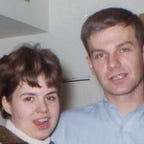A Messy Story
Legends, heroes, myths, downright lies —where would baseball be without them? They've been around ever since Abner Doubleday didn't invent the game, and they've only served to make baseball an ever-more colorful game.
So, for this edition of "The Reading Season" we look at an old story in a relatively new package. It's about the shortest home run in history and it happened in Minneapolis. It might even be true.
On that fateful day in 1903 at Nicollet Park, the Minneapolis Millers were facing their rivals from across the river, the St. Paul Saints. The Saints were giving the Millers an unholy beating, leading by three runs as the game went into the bottom of the ninth. The Millers had two outs but they had also loaded the bases when Andy Oyler, the team's smallest player and its worst one, came up to bat.
Could there be a better set-up than that for a baseball legend?
Thanks to Matt Tavares and his wonderful book, Mudball, (Candlewick Press 2005)you can actually picture what happened. And beyond that, you'll soon feel yourself rooting for the little guy, dissing the Saints and even booing the ump. In other words, a real baseball experience on each page.
We'll refrain from spoiling the story for you, but, hey, if you're a baseball fan, you can guess. And a guess, even a right one, will not spoil the pleasure of looking at and reading this book.
Tavares has done several baseball books aimed at young readers, but their appeal, especially in this one with its retelling of an old and treasured story, is ageless.
We first discovered Tavares when he illustrated a children's book done by Don's cousin Kristin Kladstrup, The Gingerbread Pirates (Candlewick Press 2009).
We'd told Kristin about a game Don played in the rain and mud of Normandy, and she said, "That reminds me of a book Matt Tavares did. You've got to see it." She then went one step further and got us a copy of Mudball and had it signed by Tavares himself.
The story has extra appeal for us because we lived in Minneapolis for eight years. We can well imagine a game with Andy Oyler at the old Nicollet Park. The Park hosted more baseball legends than you can shake a stick or a bat at. It opened in 1896 as Wright Field, the home turf of the Millers who were then playing in the Western League. The field's name was changed the next year and in 1912, the old wooden stadium where Andy Oyler played was torn down to make way for a modern one of concrete. A couple of decades later, lights were added, which meant that everybody could clearly see a young Ted Williams hit 43 home runs there in 1938 before he left for the big leagues.
Williams's 43 were far from being a record, however, as a guy named Joe Hauser had hit 69 homers with the Millers in 1933. It looked like "Unser Choe," as he was known, would actually hit 70 that year, but in a fashion that would have upset Andy Oyler, the last game of the season was rained out.
Willie Mays made a brief stop at Nicollet, too, playing about month for the Millers before the San Francisco Giants brought him up to the Majors in 1951.
Oyler himself had a brief stop, his in the Majors, putting in a few weeks with the Baltimore Orioles in 1902 before being released and joining the Millers where he played shortstop for seven seasons. He was considered a good fielder, but not much of a hitter. His batting average had trouble getting above .250. He was, indeed, a relatively small guy, standing about 5'6" and weighing just 138. Nonetheless, pitchers said he was hard to pitch to because of the way he crouched down at the plate turning himself into a human pretzel.
He is listed as having one home run to his credit.
Was that the famous one where the ball was lost in the mud? There don't seem to be any contemporary accounts of the mud ball game, but stories began being told about it soon after and generations of Millers fans took it as gospel. Michael Bryson wrote about it as The Twenty-Four-Inch Home Run in his 1990 book for Contemporary Books. Bryson said the ball landed 24 inches in front of home plate and Oyler circled the bases while the Saints tried to find the ball in the mud there. Another writer claimed the ball traveled more than five feet, but in both cases, they agree it was the shortest home run on record.
Oyler died in 1970, so none of the writers were able to confirm the story with the player. There seems to be no record of Oyler himself ever discussing the details of his single home run, but one way or another, it has become a baseball truth, right up there with Babe Ruth's called home run.
Nicollet Park ended its life in a manner worthy of baseball lore.
The year was 1955 and the Millers had won their minor league division earning the right to face the Rochester Red Wings in what was then called the Junior World Series. The series went the distance, all seven games, with the seventh and deciding game played in the doomed Nicollet Park. It had been announced the Park would be torn down and closed for good at the end of the season. That final game was hard-fought, we're told, but the Millers prevailed and Nicollet went out in style.
Andy Oyler would have been proud.
